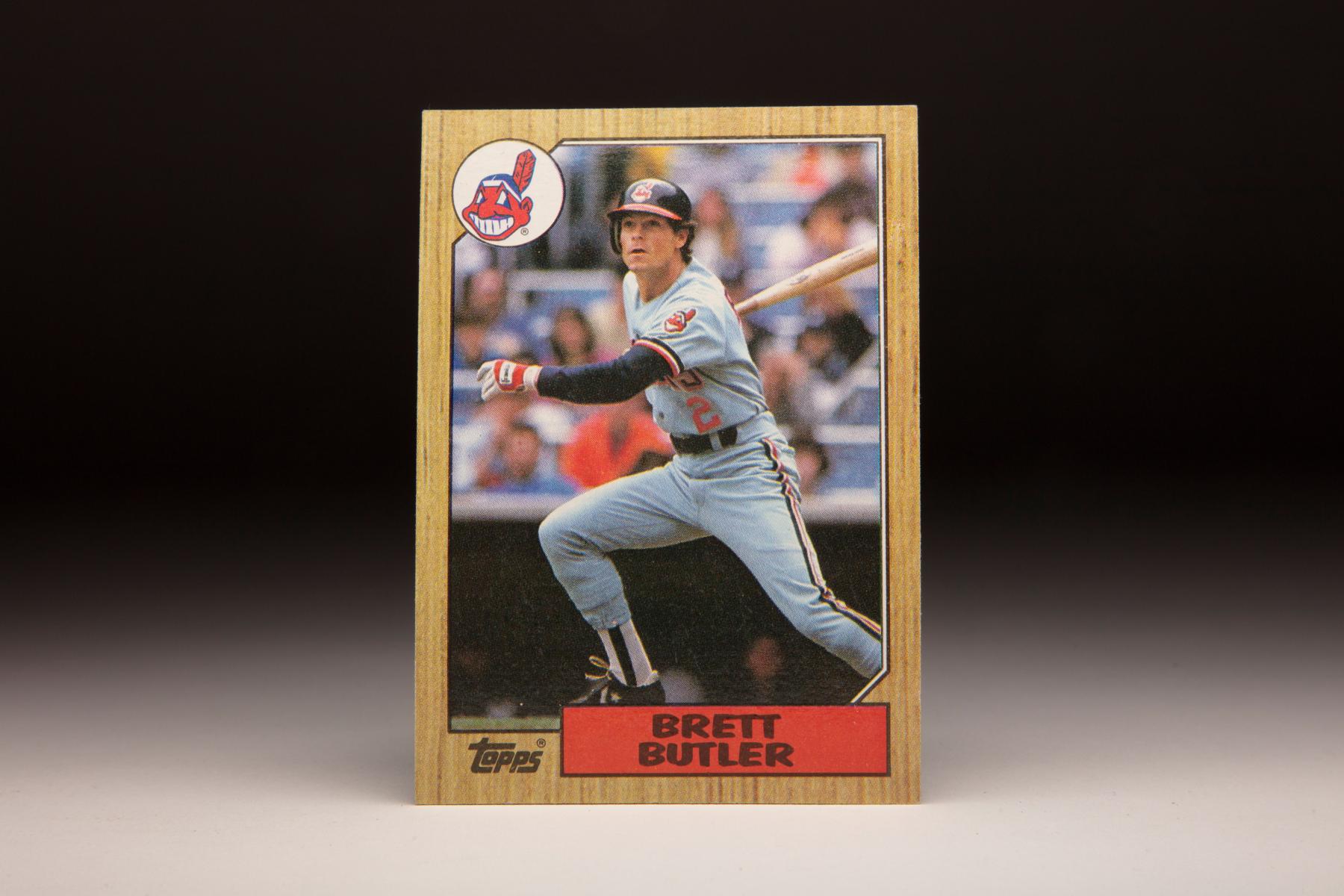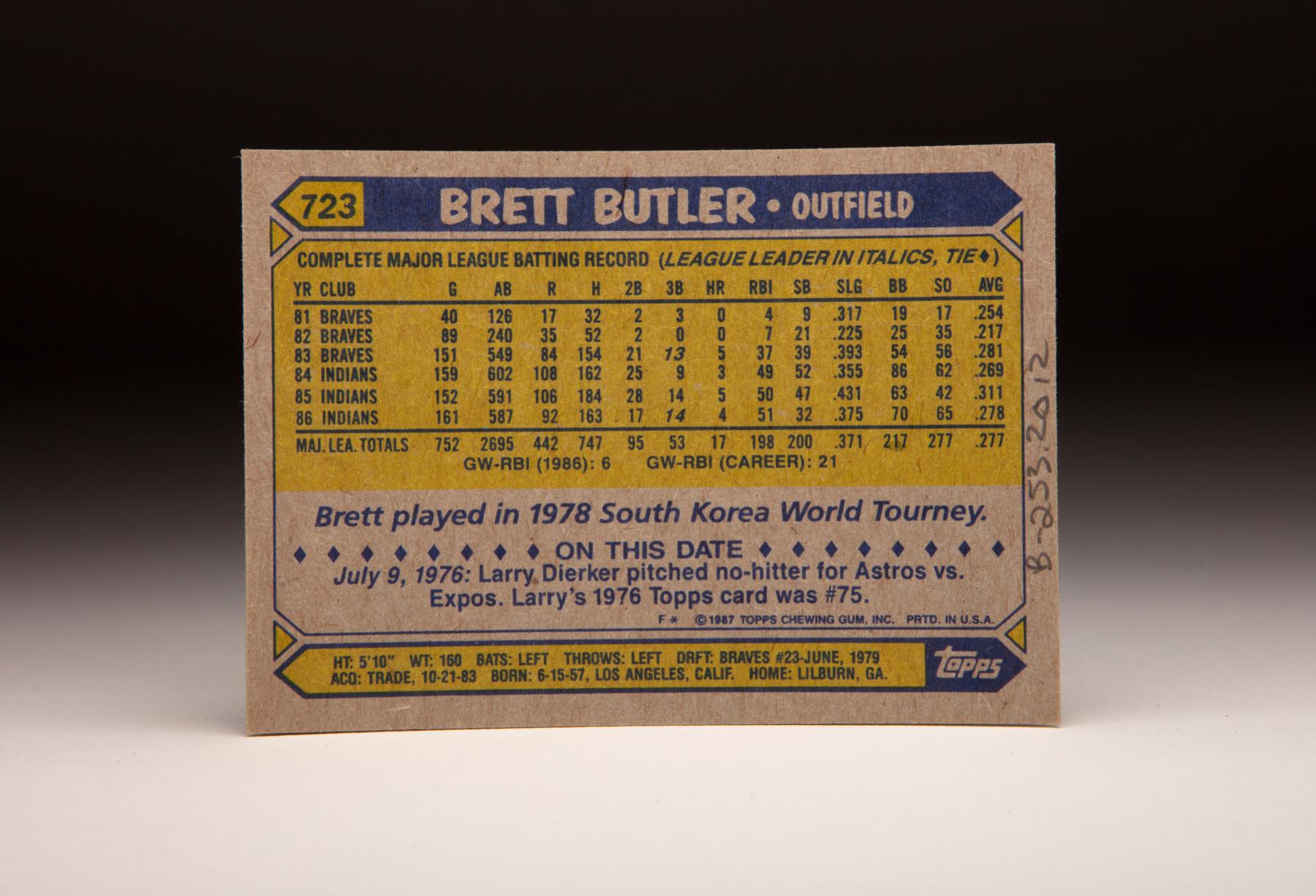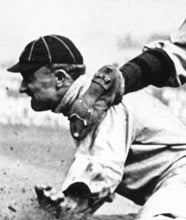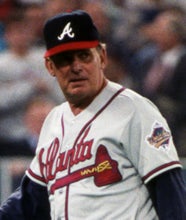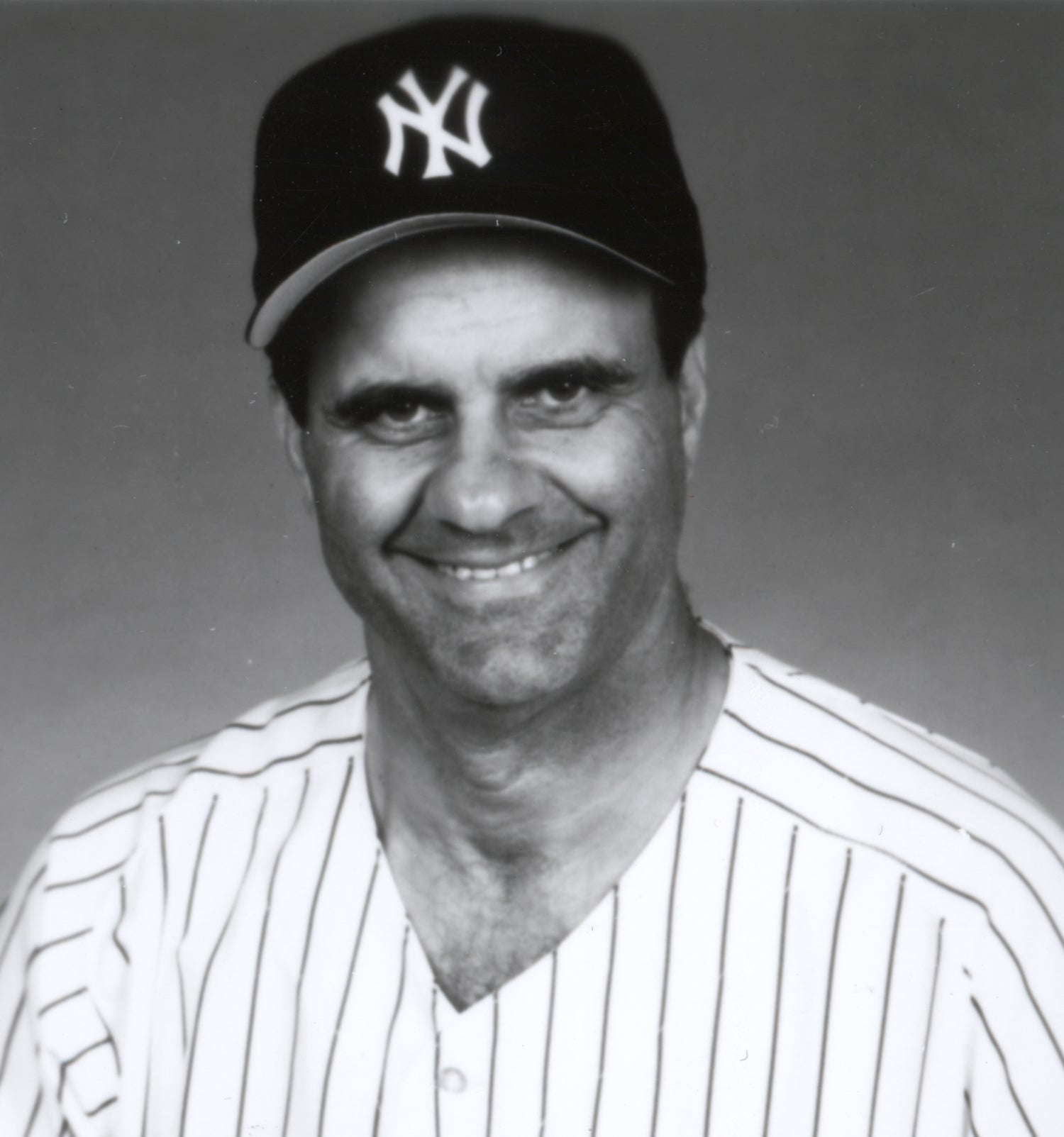- Home
- Our Stories
- #CardCorner: 1987 Topps Brett Butler
#CardCorner: 1987 Topps Brett Butler
Brett Butler was active in the big leagues from 1981-97, and during those years he compiled a WAR of 49.7.
Only 16 players who also played during that time had a better WAR for that span of seasons. And 14 of those players are in the Hall of Fame.
If Butler had played during the current era, his knack for getting on base and scoring runs would have likely made him a superstar.
Born June 15, 1957, in Los Angeles, Butler grew up in Libertyville, Ill. At 5-foot-3 and 92 pounds in high school, Butler’s best sport was wrestling – and his never-ending supply of energy made him a natural. But his love was baseball. In seventh grade, he wrote a report saying that he would become a big league player.
But Butler had trouble even finding playing time for his high school baseball team. He was undeterred, however, and walked on at Arizona State – a traditional college baseball powerhouse – before earning a scholarship to play at Southeastern Oklahoma State University, which was then an NAIA school.
Be A Part of Something Greater
There are a few ways our supporters stay involved, from membership and mission support to golf and donor experiences. The greatest moments in baseball history can’t be preserved without your help. Join us today.
Official Hall of Fame Merchandise
Hall of Fame Members receive 10% off and FREE standard shipping on all Hall of Fame online store purchases.
With the Savages – as the team was known then – Butler hit better than .400 and was twice named an NAIA All-American. Now much closer to his big league playing height of 5-foot-10, Butler was still considered too small by many scouts.
He graduated from Southeast Oklahoma State in 1979 with a degree in education – and the Braves, on the recommendation of scout Bob Mavis, took Butler in the 23rd round of the June draft. He pocketed a $1,000 bonus and was sent to Atlanta’s Gulf Coast League team, where he hit .369 in 30 games before earning a promotion to Class A Greenwood of the Western Carolinas League.
The next season, Butler thrust himself onto the Braves’ radar by hitting .330 with 120 runs scored, 80 stolen bases and 134 walks – good for an astounding .478 on-base percentage – with Class A Anderson and Durham in a combined 136 games.
“To tell you the truth, I was upset about being sent to Anderson last year,” Butler told the Anderson (S.C.) Independent in Spring Training of 1981. “I thought I had made the club at Durham. Then on the final day of Spring Training, the put me in Anderson. I came to Anderson and was confident that I was going to show (the Braves’ front office) they had made a mistake.”
Butler spent the fall of 1980 with the Braves’ Instructional League team, working with future Braves manager Eddie Haas and coming to the attention of then-Braves’ skipper Bobby Cox. He earned an invitation to the Braves’ Spring Training camp in 1981 before being sent to Triple-A Richmond.
In Triple-A, Butler hit .335 with a .456 on-base percentage, 103 walks, 44 steals and 93 runs scored in 125 games – eventually winning International League Most Valuable Player honors – before being called up to Atlanta in late August. He was penciled in as the left fielder and leadoff hitter Aug. 20 against the Mets at Atlanta-Fulton County Stadium and finished with a double and two runs scored.
“I got a good round of applause when I first got to bat,” said Butler, whose exploits in the minor leagues has been chronicled regularly by the Atlanta media. “I was scared to death. All I wanted to do was hit the ball.”
But for the first time in his pro career, the game did not come easy for Butler. He hit .254 with nine stolen bases in 40 games for the Braves during the rest of the 1981 season, compiling a respectable .352 on-base percentage via his 19 walks. But after earning the starting center field job in 1982, Butler found himself hitting .228 with a .310 OBP and seven RBI at the end of June.
The Braves soon optioned Butler back to Richmond. He quickly proved he was ready for another chance when he hit .363 with a .442 OBP over 41 games, and the Braves brought him back to Atlanta in mid-August. He then struggled to a .158 batting average over his final 28 games, finishing the year with a .217 batting average over 89 games in Atlanta.
“I was crushed,” Butler told the Orlando Sentinel of his demotion to Richmond in 1982. “My priorities were in the wrong place. Everything I did, my first thought was how (manager) Joe Torre would like it.”
But Butler leaned on his faith during the offseason and reported to Spring Training in 1983 determined to win back his job. It was not an easy climb – but for the second straight year, Butler was the Braves’ starting center fielder on Opening Day.
“He was clearly behind Terry Harper and Jerry Royster when we began (Spring Training),” Torre told the Sentinel. “But he began swinging the bat good. That was the only question. I knew he could play the outfield better than the other two.”
Butler and Dale Murphy swapped positions in late May, with Butler going to left field. His average had hovered in the .250 range for most of the first half of the season before he caught fire in July, hitting .355 with 12 stolen bases that month. By the end of the season, Butler was hitting .281 with a .344 on-base percentage, 84 runs scored 39 steals and a big league-best 13 triples.
But before the season was over, Butler was already gone from Atlanta. On Aug. 28, the Braves – trying to make a push to defend the NL West title they won in 1982 – acquired pitcher Len Barker from the Indians for cash and players to be named later. Butler’s name quickly surfaced as one of the potential players, though the Braves did not officially announce the return until Oct. 21 when Butler was sent to Cleveland along with prospects Brook Jacoby and Rick Behenna.
In the time between the initial trade and the finalization of the deal, the Braves attempted to keep Butler by substituting other players. The Indians reportedly asked for top prospects Steve Bedrosian or Brad Komminsk, but the Braves refused.
“I can’t recall anybody being in this situation,” Butler told the Atlanta Constitution. “It’s tough sitting around, not knowing if I’ve got a new team or if I’m staying.”
The deal proved to be a steal for Cleveland as Barker totaled a 10-20 record and 4.64 ERA in parts of three seasons with Atlanta, while Butler and Jacoby became fixtures in the Indians’ lineup. Butler hit .269 with 108 runs scored, 86 walks and 52 steals in 1984, then followed that with a .311 batting average, 106 runs and 47 stolen bases a year later.
Butler also led all AL center fielders with a .998 fielding percentage in 1985 and was second to Kirby Puckett with 434 putouts. But Butler did not win a Gold Glove Award – an honor that somehow eluded him throughout his entire career.
“That still hurts,” Butler said of the Gold Glove snub after he won his arbitration case in the spring of 1986, which bumped his salary to $850,000. “I felt I deserved better consideration.”
Butler was part of a core of young Indians players who led Cleveland to an 84-78 record in 1986 – the club’s most victories in a season since 1968. Butler, who had become one of the team’s most popular stars, hit .278 with 92 runs scored and 32 steals and once again led all of baseball with 14 triples.
Many media outlets predicted a division title for the Indians in 1987, but Cleveland went 61-101 as Butler hit .295 with 91 runs scored, 91 walks and 33 steals. His 390 putouts in center field led the AL, the first of three times he would lead his league in that category.
“I know how I feel now when I’m going good,” Butler told the Associated Press while in the midst of a 19-game hitting streak in August. “It’s like tunnel vision between you and the pitcher. Your confidence is superb.”
Butler became a free agent following the season and quickly signed a two-year deal worth $1.8 million with the Giants.
“(It’s like) having Santa Claus come early,” Giants general manager Al Rosen told the Sacramento Bee. “Brett Butler is the consummate leadoff man. He just does everything well.”
Butler, whose family lived in the East Bay town of Fremont, Calif., during the early years of his childhood, was thrilled to have a chance to go to a team that won the NL West title in 1987.
“The money Cleveland offered me was the same, but I don’t think money is the issue,” Butler told the Bee. “Every player’s goal is to be on a World Series club and get a ring. That’s what drew me to San Francisco.”
Butler led the NL with 109 runs scored in 1988 while hitting .287, drawing 97 walks and stealing 43 bases. He also finished 17th in the NL Most Valuable Player voting – the first time he had earned MVP votes in his career. He hit .283 with 100 runs scored in 1989, helping the Giants win the NL West title and advancing to the postseason for the first time since he appeared in two games off the bench for the Braves in the 1982 NLCS.
He had four hits and drew three walks in the Giants’ five-game win over the Cubs in the NLCS, then hit .286 with two steals as San Francisco was swept by Oakland in a World Series that was interrupted by the Loma Prieta earthquake.
“I’ve dreamed of playing the World Series my whole life,” Butler told Gannett News Service. “But with all the devastation going on, I can take it or leave it. This makes you realize just how insignificant the game is.”
Butler returned to the Giants in 1990 after finding no satisfactory offers in free agency. He hit .309 and led the NL with 192 hits while also drawing 90 walks and stealing 51 bases. In the modern era (post 1900), only Ty Cobb in 1915 posted a season with at least 190 hits, 90 walks and 50 steals.
Following the season, Butler was made a “new look” free agent based on a collusion settlement between the players and owners. Butler quickly signed a three-year deal with the Dodgers worth a reported $10 million along with an option year for 1994 at $3.5 million.
Now entering his age-34 season, Butler seemed not to lose a step – hitting .296 with NL-best totals in runs (112) and walks (108). He earned his first All-Star Game selection and finished seventh in the NL MVP voting.
“After 10 years, I had resigned myself to the fact I was never going to be an All-Star,” Butler told the AP. “I couldn’t believe it. I told my wife (Eveline) and she started crying and I started crying. It’s all a dream come true for me.”
Butler hit .309 with 95 walks and 41 steals in 1992, posting a career-best .413 on-base percentage. He put up nearly the same numbers again in 1993, hitting .298 with 86 walks and 39 steals.
The Dodgers decided a 37-year-old center fielder was not a bad investment – and exercised Butler’s option for 1994.
“There isn’t anyone who does more things you like to see than Brett Butler,” Dodgers general manager Fred Claire told the Los Angeles Times. “He plays the way you want to see, he prepares the way you would want him to play.”
Butler was headed toward his usual full-season totals in 1994 when the strike shut things down in August. In 111 games (the Dodgers played 114 that year), Butler hit a career-best .314 with an NL-best nine triples and 68 walks that produced a .411 on-base percentage.
Butler signed a one-year, $2 million deal with the Mets when baseball resumed – the parting was not amicable, as the Dodgers claimed they could not afford him – in the spring of 1995 and hit .311 with 21 steals in 90 games before being dealt back to the Dodgers for two minor leaguers on Aug. 18. He moved right back into center field for Los Angeles and helped the team win the NL West title, leading the NL in triples with nine for the second straight year while hitting .300.
Butler returned to the Dodgers in 1996 and appeared in each of the team’s first 29 games before he was diagnosed with throat cancer in May after enduring a sore throat for months. A tonsillectomy produced a cancerous tumor the size of a plum, and Butler was expected to miss the remainder of the season. But he returned in September – only to break his hand on Sept. 10 while being hit with a pitch while attempting to bunt.
In 1997, Butler missed almost the entire month of May with a shoulder injury as time began to slow his seemingly indestructible skills. Butler soon announced he would retire at the end of the season but worked hard at his comeback and was still an effective player, hitting .283 with 52 runs scored in 105 games.
“I can’t be a platoon player,” Butler told the L.A. Times toward the end of his career. “I just can’t sit.”
Butler was hired by the Diamondbacks as a coach in 2005 and then was named manager of Class A Lancaster in 2006. He moved on to Double-A Mobile in 2007 before landing with Triple-A Reno in 2009 – managing the Aces through the 2013 season.
He coached third base for the Miami Marlins in 2014 and 2015.
Butler finished his 17-year big league career with a .290 batting average, a .377 on-base percentage, 2,375 hits, 1,359 runs scored, 1,129 walks and 558 stolen bases (25th on the all-time list).
He also managed 54 home runs, nearly a third fewer than his career total for triples (131). But even without major power, Butler still found ways to work the count and draw walks.
He is the only player who spent the majority of his career in the Expansion Era (post 1960) who compiled an on-base percentage of at least .375 and a slugging percentage of less than .380.
“People have always said I was too small,” Butler told the Anderson Independent before breaking into the major leagues. “But I’ve always said: ‘Give me the chance and I’ll do the job. A chance: That’s all I’m asking for.”
Craig Muder is the director of communications for the National Baseball Hall of Fame and Museum
Related Stories
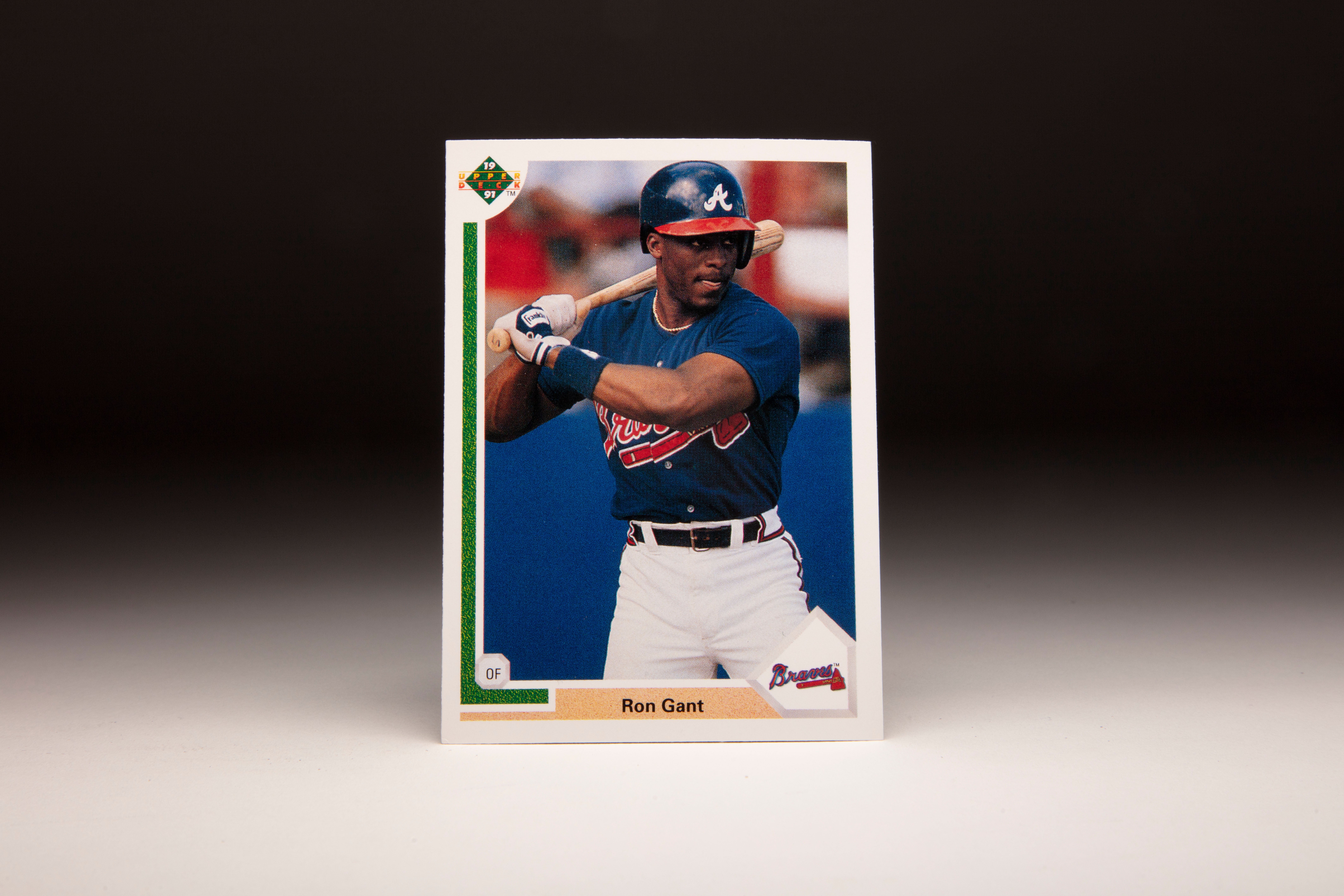
#CardCorner: 1991 Upper Deck Ron Gant

#CardCorner: 1985 Topps John Tudor
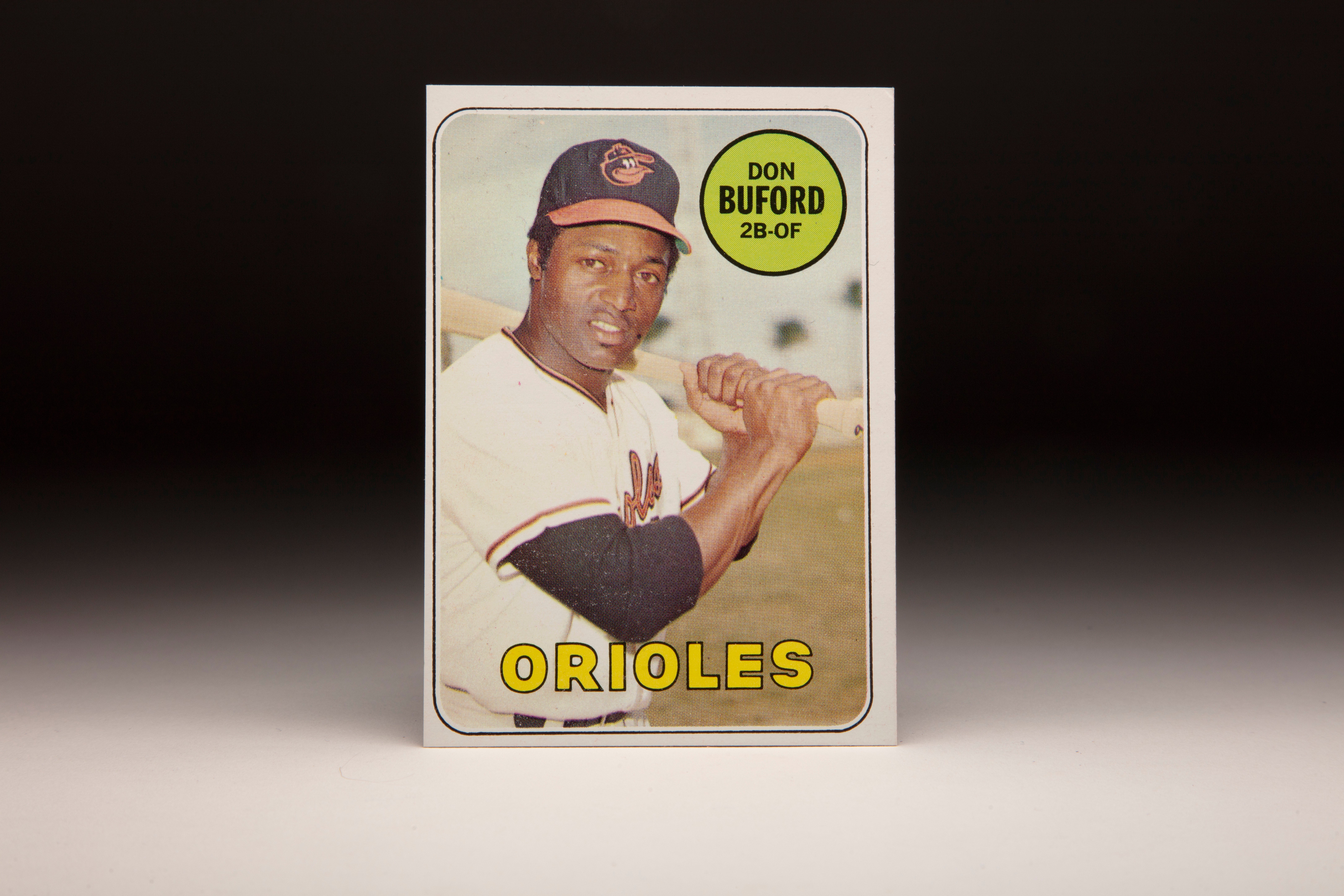
#CardCorner: 1969 Topps Don Buford

#CardCorner: 1978 Topps Doug DeCinces

#CardCorner: 1991 Upper Deck Ron Gant

#CardCorner: 1985 Topps John Tudor

#CardCorner: 1969 Topps Don Buford


